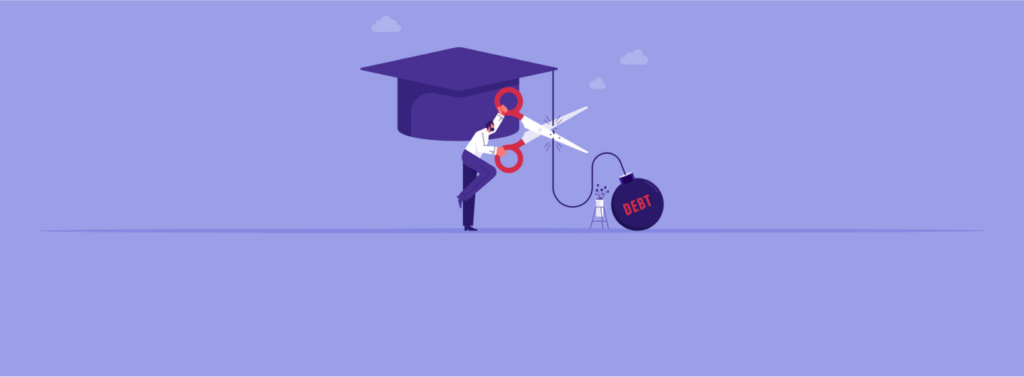At Calbright, it’s easy for us to talk about the cost of college and student debt. That’s because all our programs are currently free to Californians. We offer a free cybersecurity certificate program. Our IT certificate program is free. Our career services are all free. Calbright is a free online community college, so our students don’t have any student loan debt and don’t have to make the difficult decision between working and advancing their education. Talking about that is easy.
But for hundreds of thousands of people across the country, student debt is a shared challenge, and even secret shame.
That was vividly shown in a recent New York Times article which interviewed people who have been carrying hundreds of thousands of dollars of student loan debt and were too ashamed to talk about it.
But maybe that’s changing.
“Conversations about student debt have come a long way in the past few years,” the Times writes.
“What was once an awkward or even shameful topic is now, at least for some, part of a normal Tuesday night exchange about where to eat. Part of this shift is generational. Millennials, the generation most likely to have student debt, have challenged taboos against talking about finances; some surveys have shown that they are more likely to bring up money with friends, co-workers, even strangers on social media.”
And of course there’s now more talk about student debt than ever at the national level, with a movement lobbying Congress and the White House to cancel student loans.
We hope this change is real and sustainable because the burden of student loan debt is unsustainable, and the first step to fixing the system is to talk about it. As we’ve noted before: supportive colleges are up front about money, while predatory colleges try not to talk about it, or claim that it’s not a problem.
Free Online Community College
But so much of the conversation focuses on reducing the impact of student loans. The Times article, for example, focuses on questions about whether interest rates can be lowered and people can become more thoughtful about the loans they take on.
Calbright asks an even more radical question: what if we just don’t have them?
What if we reimagined college so that it didn’t have any student loans?
As a free, online, community college, Calbright proves that the question can be asked. We can reimagine college to entirely change the way education is financed.
It’s not an accident that surveys show an increasingly large number of potential students see free, online, community college as an ideal solution for the challenges they face in their lives.
The more we talk openly and honestly about the cost of college, the more we see that we need new models of higher education which emphasize accessibility. Calbright is a model for how that conversation can become a practical reality.



